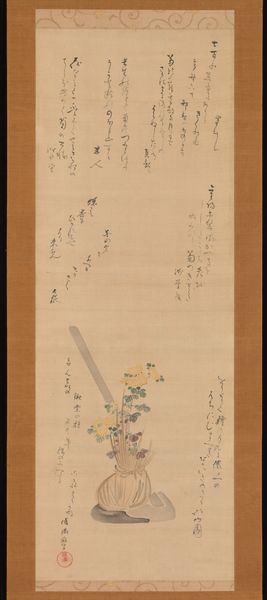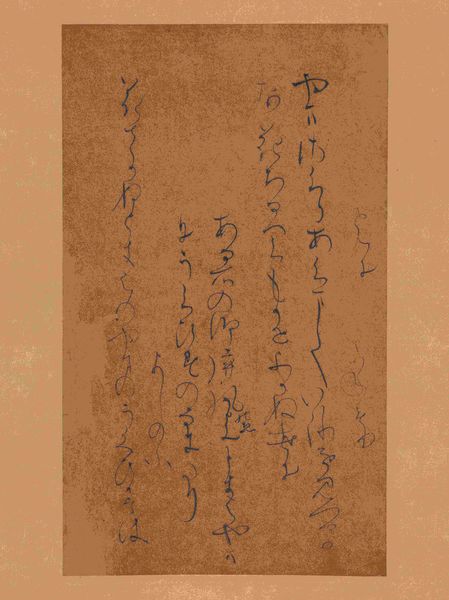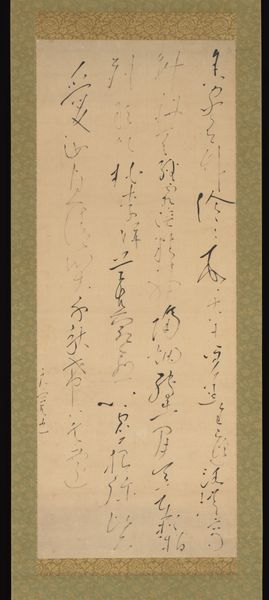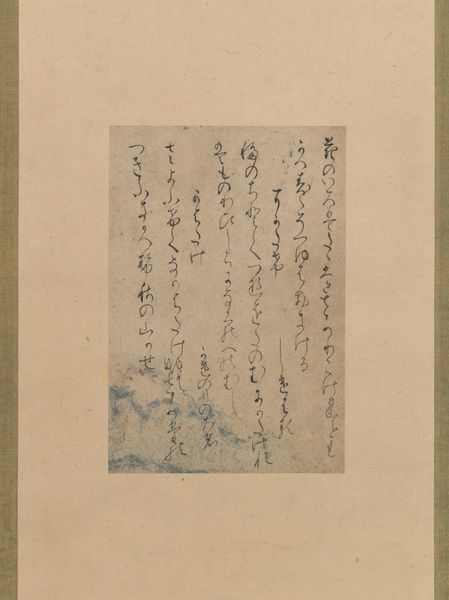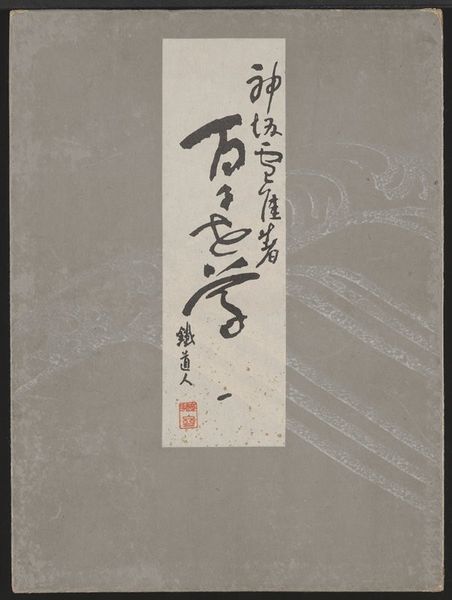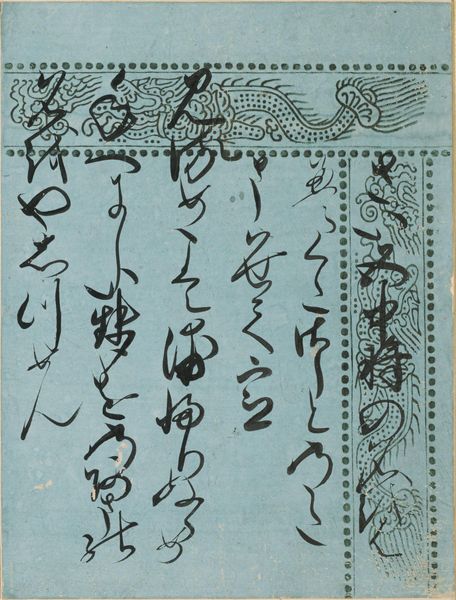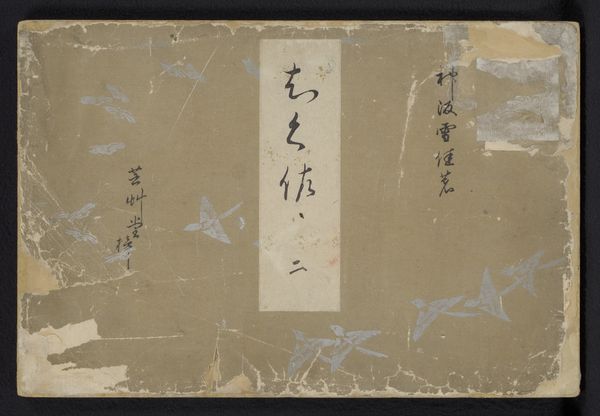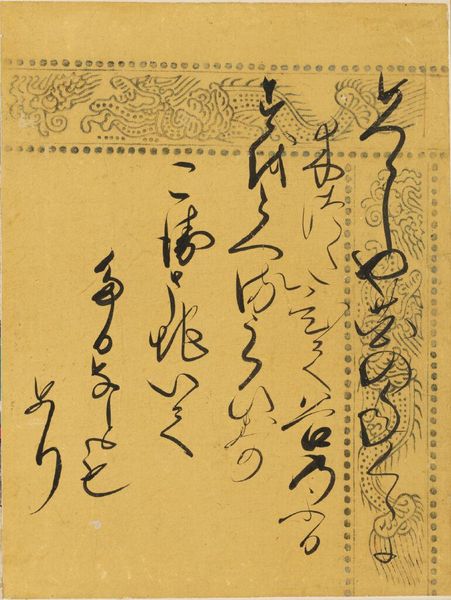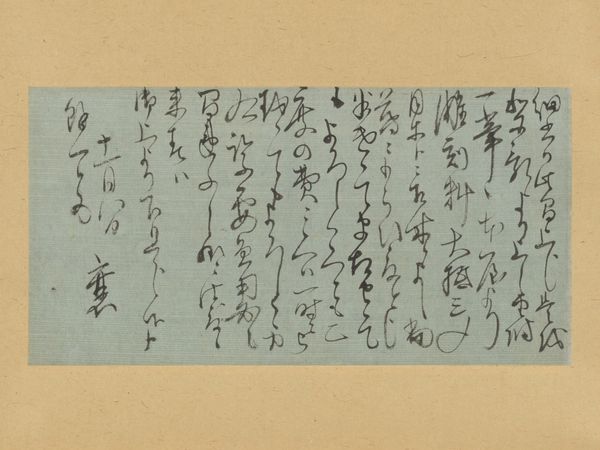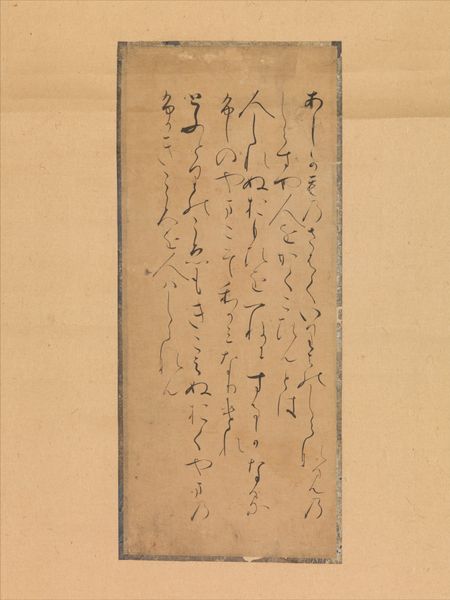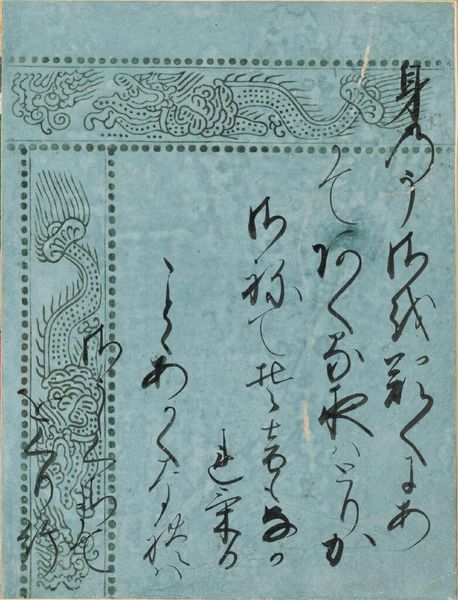
# print
#
asian-art
#
landscape
#
bird
#
ukiyo-e
#
folk art
#
calligraphy
Dimensions: Image: 36 1/16 × 11 7/8 in. (91.6 × 30.2 cm) Overall with mounting: 72 1/4 × 19 3/16 in. (183.5 × 48.8 cm)
Copyright: Public Domain
Curator: My first impression is… serene, melancholy almost. A cool loneliness hangs about this composition, doesn't it? Like a haiku captured in ink. Editor: Absolutely. What we're seeing here is "Hototogisu," a print by Kubo Shunman created sometime between 1800 and 1820. It's currently residing at the Metropolitan Museum of Art. Beyond its immediate emotional effect, there’s a deeper story to be found. Curator: Ah, yes, Ukiyo-e, pictures of the floating world! Makes sense, given the transience in this image. The bird suspended in its solitary flight feels so momentary, doesn’t it? The moon just glows softly behind it as it flutters its tiny heart. Editor: Precisely. This particular artwork aligns with the *kachō-e* tradition—bird-and-flower painting, a genre that carries significant social and cultural weight. The lone *hototogisu*, or lesser cuckoo, becomes emblematic of something much bigger. Curator: The script scrawled at the top–almost obscures the scene a little–but creates a balance against the orb of the moon. There's definitely something ghostly about it, but grounding at the same time. A contrast between this material world, and another one, I feel. Editor: In many ways it highlights themes of liminality and the complexities of the human experience. Consider the traditional symbolism of birds in Japanese art—messengers between worlds, carrying souls, hinting at migration, and cyclical existence. Think about the rising merchant classes commissioning similar Ukiyo-e artwork, how this print offers commentary on shifting social status and hierarchies. Curator: Fascinating! It’s easy to simply get lost in the sheer visual beauty, but now, knowing that symbolism really deepens the appreciation. This bird isn’t simply flying. It’s in pursuit of something. Perhaps it also laments something... I almost wonder. I imagine there's pain, transformation even, echoing within those lines. Editor: Well put. Art is very much about transforming both oneself and the world around us. With a work like this, so historically grounded in particular social conditions, seeing our modern reflections in it allows a vital dialogue between then and now. Curator: Precisely. It makes the image dance, like that lone little bird amidst the brushstrokes. It invites us to linger between feeling, story and significance... which, at the end of the day, it’s truly wonderful.
Comments
No comments
Be the first to comment and join the conversation on the ultimate creative platform.
